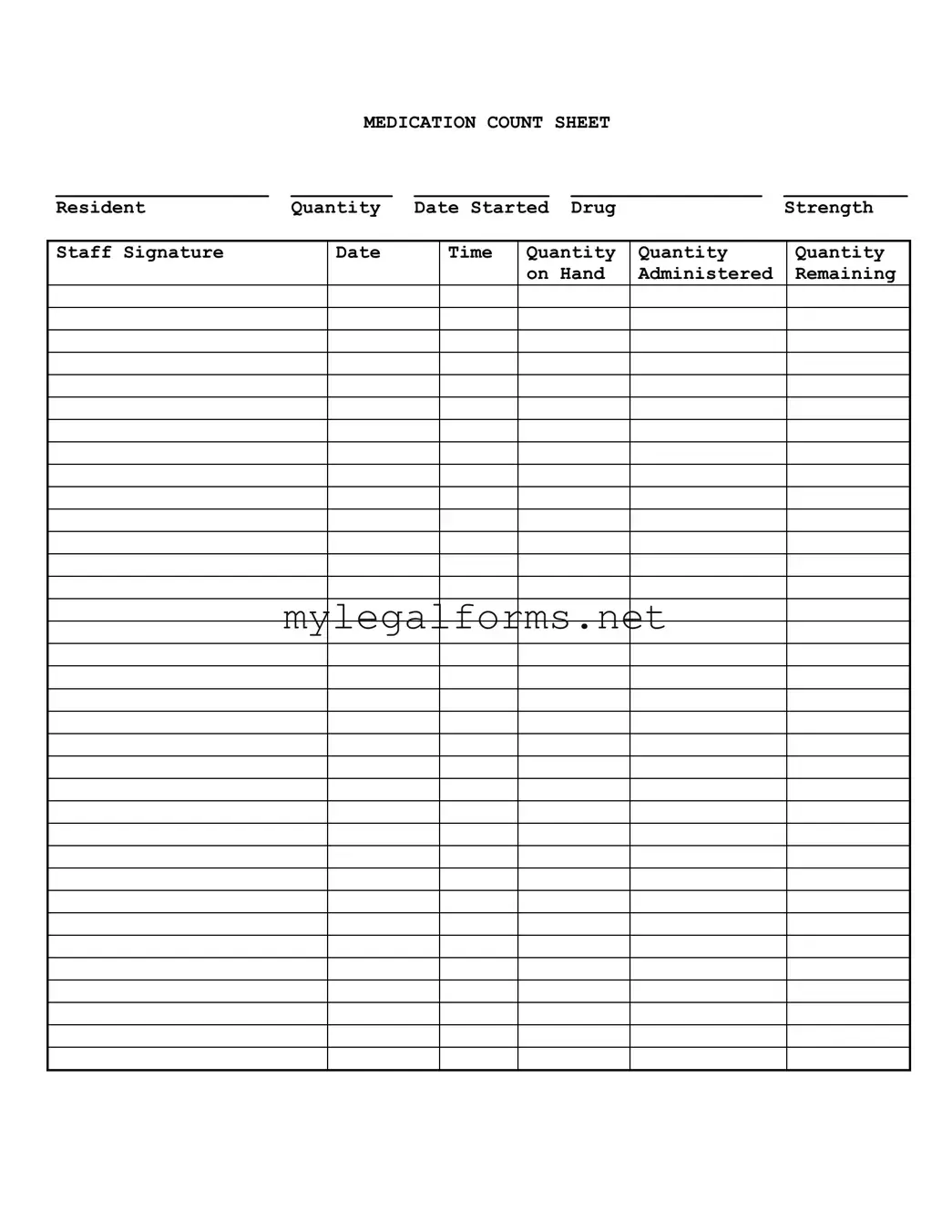When filling out the Medication Count Sheet form, many individuals make common mistakes that can lead to confusion and errors in medication management. One frequent error is failing to include the resident's name. Without a clear identification of the resident, it becomes challenging to track medication accurately, potentially leading to serious consequences.
Another mistake is not recording the date started for each medication. This information is crucial for understanding the treatment timeline and ensuring that medications are administered appropriately. Omitting this detail can create gaps in the medication history.
People often overlook the importance of noting the drug strength. If the strength is not documented, it can lead to administering the wrong dosage, which may compromise the resident's health. Accurate strength information is essential for safe medication administration.
Inconsistent entries for the quantity administered can also pose significant problems. If the quantity given is not recorded accurately, it becomes difficult to determine how much medication remains and whether the resident has received the correct amount. This inconsistency can lead to overdoses or missed doses.
Another common oversight is neglecting to fill out the staff signature section. This signature serves as a verification step, confirming that the medication was administered by a qualified individual. Without it, accountability can be lost, and questions about who administered the medication may arise.
People sometimes fail to update the quantity on hand after administering medication. This can lead to discrepancies in inventory, making it harder to track medication levels accurately. Regular updates are essential to ensure that there is always an adequate supply of medications available.
It is also important to record the date and time of administration. Many individuals forget to include this information, which is critical for maintaining a proper medication schedule. Without these details, it can be difficult to determine if medications are being given at the correct intervals.
Some individuals may misinterpret the form's layout, leading to incorrect entries in the wrong columns. This can create confusion and complicate the tracking process. Ensuring that each entry is made in the correct section is vital for maintaining clarity.
Lastly, not reviewing the completed form before submission can lead to overlooked mistakes. Taking a moment to double-check entries can prevent errors that might otherwise go unnoticed. A thorough review helps ensure that the medication count sheet is accurate and reliable.
By avoiding these common pitfalls, individuals can help ensure that the Medication Count Sheet form is filled out correctly, ultimately promoting the safety and well-being of residents who rely on accurate medication management.

